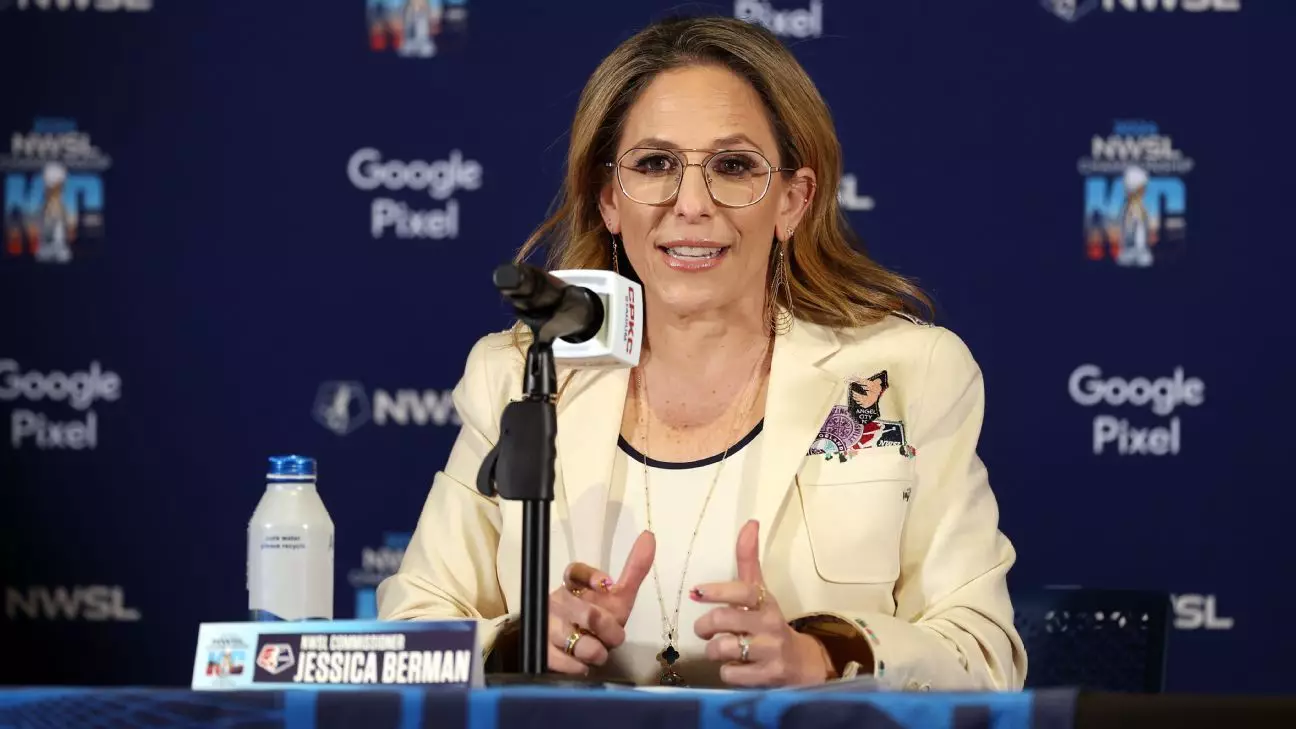With an impressive trajectory of growth and heightened visibility in women’s sports, the National Women’s Soccer League (NWSL) is set to embark on a new chapter. Jessica Berman, the league’s commissioner, recently articulated the NWSL’s continued commitment to expansion, emphasizing that the upcoming week will mark the announcement of the league’s 16th franchise. Speculation is rife that Denver will emerge as the newest location to host an NWSL club, fueling excitement among fans and stakeholders alike. This strategic growth initiative is just the beginning as Berman reassures the public that their expansion efforts are far from complete.
The NWSL’s decision to expand from 14 to 16 teams by 2026 reflects a strong commitment to enhancing the league’s presence and competitiveness. With BOS Nation FC already slated as the 15th franchise, anticipation builds for the Denver announcement, signaling an era where women’s soccer garners further attention and support. Berman’s remarks indicate that the league is actively engaging with various interested bidders, underscoring the appeal of NWSL ownership opportunities. The influx of potential team owners also illustrates the burgeoning interest and marketability of women’s soccer.
As the NWSL looks ahead, Berman outlined three critical guidelines that will determine the selection of future markets. The first is the caliber of ownership—a crucial factor in maintaining the financial integrity and vision of each team. Berman underscored the need for owners who possess both the financial capacity and a dedication to nurturing their franchises in a sustainable manner.
The second guideline revolves around infrastructure, underscoring the importance of having appropriate stadiums and training facilities. Berman’s selective approach to this aspect is commendable, as it demonstrates an understanding of the evolving standards and expectations surrounding professional sports. The facilities must not only meet current criteria but also anticipate future needs, ensuring teams can adapt dynamically to the growing demands of the league.
Finally, market potential is the third determining factor, reflecting the NWSL’s broad perspective on growth. With the vast landscape of the United States as a backdrop, Berman noted that myriad viable markets exist for NWSL franchises. This expansive outlook allows for thoughtful consideration rather than a knee-jerk response to immediate pressures, ensuring that each new franchise has the potential for success.
As NWSL prepares for significant transitions—including the elimination of the traditional college draft system and the introduction of free agency—Berman characterized this period as a collective learning curve for the league. The impact of these changes will resonate throughout the entire ecosystem, presenting unique challenges and opportunities.
The absence of a college draft and the move to a more open player market necessitates an adjustment period, not just for franchises but also for players. Many athletes currently find themselves navigating uncertain waters as they seek new opportunities in light of these structural changes. Berman’s acknowledgment of these complexities reflects a deep understanding of the league’s dynamics and the need for supportive structures to assist players in this transition.
The NWSL’s newly announced schedule for the 2025 season, featuring a flagship “Rivalry Weekend” and the anticipated “Decision Day,” further illustrates the league’s proactive approach to fostering a competitive atmosphere as well as fan engagement. These initiatives aim to enhance the viewing experience, drawing in larger audiences and amplifying the excitement that accompanies the league’s expansion.
The NWSL stands on the brink of significant transformation, with aggressive expansion plans set to reshape the landscape of women’s soccer in the United States. The strategic guidelines outlined by Berman, combined with a commitment to fostering a robust league infrastructure, indicate a thoughtful approach to growth. As the league navigates challenges and embraces new opportunities, there is palpable enthusiasm for what lies ahead—a future where women’s soccer not only thrives but also cements its place in the broader sports culture. The NWSL is not just expanding; it is reinventing the framework of women’s sports for the better.

